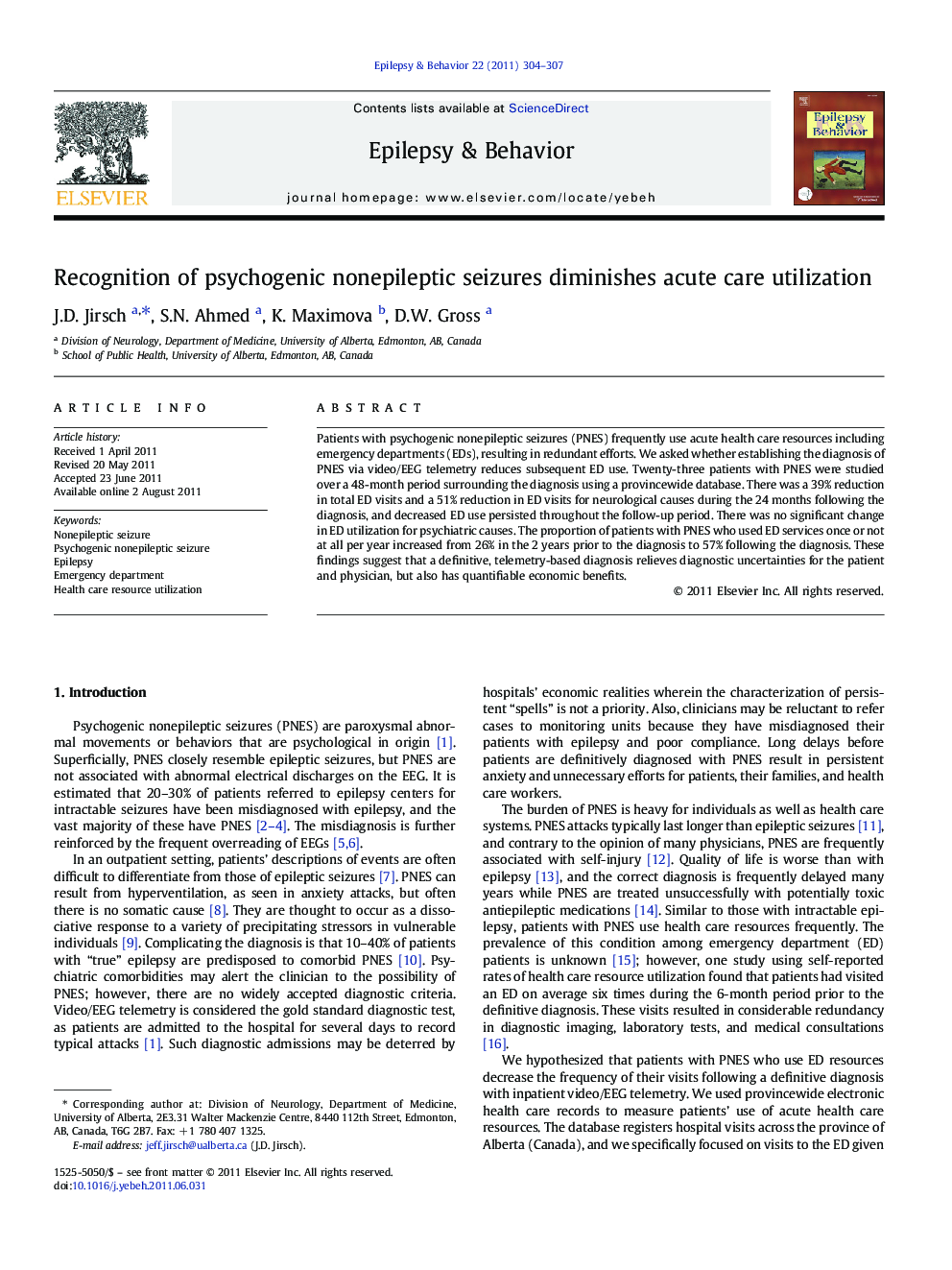| Article ID | Journal | Published Year | Pages | File Type |
|---|---|---|---|---|
| 6013996 | Epilepsy & Behavior | 2011 | 4 Pages |
Patients with psychogenic nonepileptic seizures (PNES) frequently use acute health care resources including emergency departments (EDs), resulting in redundant efforts. We asked whether establishing the diagnosis of PNES via video/EEG telemetry reduces subsequent ED use. Twenty-three patients with PNES were studied over a 48-month period surrounding the diagnosis using a provincewide database. There was a 39% reduction in total ED visits and a 51% reduction in ED visits for neurological causes during the 24Â months following the diagnosis, and decreased ED use persisted throughout the follow-up period. There was no significant change in ED utilization for psychiatric causes. The proportion of patients with PNES who used ED services once or not at all per year increased from 26% in the 2Â years prior to the diagnosis to 57% following the diagnosis. These findings suggest that a definitive, telemetry-based diagnosis relieves diagnostic uncertainties for the patient and physician, but also has quantifiable economic benefits.
⺠Incident psychogenic nonepileptic seizure cases were diagnosed via EEG telemetry. ⺠Emergency department use was determined over a 4-year period surrounding the diagnosis. ⺠Outcomes were measured using a provincewide electronic database. ⺠Reduced visitation followed the diagnosis for all and neurological causes. ⺠It is concluded that the diagnosis has quantifiable benefits in health care utilization.
